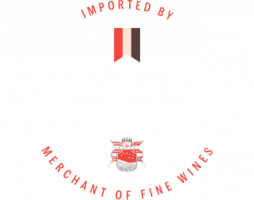2013
Harvest
2013
Harvest
Sicily
NORTHERN SLOPES OF THE ETNA VOLCANO (Province of Catania)
Marco de Grazia owner of Tenuta delle Terre Nere (Etna Rosso DOC, Etna Bianco DOC, Etna Rosato DOC) – the following is a report sent in November by Marco to the customers of the estate: “The 2013 harvest was a most difficult one. And according to the “old folks” the damnedest one they ever saw. Frustrating is the word that comes to mind! August 14, 2013 a hailstorm of rare violence and extension hit the higher elevation vineyards in the township of Randazzo. It only barely touched our higher vineyards of Calderara and a few vineyards of vignerons that confer grapes to us. But hundreds of hectars suffered up to 80% damage and loss of both quantity and quality. Until then the grapes were picture perfect and plentiful. The follow-up was the problem. The summer had been a good one, warm but not hot, dry but not dramatically so. Rain would have been very nice, the finishing touch on an already fine prospect, particularly if in August, but not absolutely necessary. So when, following the hailstorm, it started raining, and continued so for about a week, it felt good indeed. Unfortunately, it then continued raining or drizzling, either night or day, afternoon or morning or both, day in day out throughout September. Cool weather, which did not concede ripening; rain that bloated the grapes until the tight clusters forced the grapes into cracking: mold started setting in before the actual ripening took place. At Terre Nere we started thinning to avoid mold contagion, and continued doing so for roughly two weeks, harvesting grapes for wine to be sold in bulk, then for our Rosato, until finally, when we were truly ready to throw in the towel, we were rewarded with an “indian summer” that lasted until the first week of November. We produced 400 hectolitres of red wine to be sold in bulk (the equivalent of roughly 55,000 bottles!), which was a hell of a price to pay, but the grapes that were harvested from mid to the end of October will yield fine reds. How fine I cannot say until malos are over. But I believe we will release wines with less alcohol and of medium structure and very fine aromatics. The crus should be truly interesting, probably a cross between the 2009s and 2010s. In some cases maybe finer. Obviously not of the stature of the grand 2011s or 2012s. The whites are a different story altogether. First of all because white grapes do not need heat as much as light to ripen, so ripening on Etna was actually perfect. Secondly because the clusters of Carricante are loose, so there was no incident of mold or rot whatsoever. In fact, the white grapes were healthy, plentiful and ripe, with excellent acidities to boot. So I have no doubt as to the excellent quality of our Etna Bianco. The same goes for our Etna Rosato. Quantities will be more or less those of last year – perhaps 10% less Etna Rosso. How? Because we had increases the quantity of production considerably in our vineyards – mostly new vineyards coming of age, and one new hectar recently bought – and had still reserved greater quantities from the vignerons that we always buy from. The intention being to, just this once, increase by 50% the quantity of Etna Rosso, in order to be able, with the 2014 vintage, to age the Etna Rosso six months longer without leaving the market out of wine for 6 months. Well, so much for that plan! We lost almost exactly the quantity we planned to increase by. But at least we have some good wine to sell!”
SIRACUSA: Differently to the rest of Sicily, it was very dry during the winter, springtime and summer in this zone. The summer was not very hot.
Salvatore Martinico, oenologist of Azienda Agricola Pupillo (Moscato di Siracusa DOC, Sicilia IGT): “….we had to irrigate the vines at the end of June, beginning of July. The grape yield was slightly lower this year. The whites are very concentrated, the aromatics are good, the acidity is slightly lower. The reds have a good concentration and the quality is high. We started picking the Moscato grapes at the beginning of August and we continued till the 20th of the month. We picked the Nero d’Avola and the Cabernet Sauvignon grapes in September…..”
WESTERN SICILY: The winter was colder in comparison to the previous years. There were good rainfalls before the budding phase of the vines. It was dry during the springtime and at the beginning of the summer, but the vines vegetated well as they had a good water supply. After mid August there were rains.
Centonze Srl. The Company was established in 1998 by a family of oenologists, Giovanni Centonze together with his son and daughter Nicola and Carla. Approximately 20 hectares of vineyards belong to the Company in the area of Trapani and the Centonze family manages the best vineyards and selects the best grapes in the most representative Sicilian terroirs (Cerasuolo di Vittoria DOCG, Sicilia IGT). Nicola Centonze: “…the grapes were not very concentrated, but they were elegant. This harvest is more “northern” than Sicilian. The vintage factor is more evident this year. We picked the grapes a couple of weeks later than usual: we started harvesting Grillo grapes on the 10-12 of September and the Nero d’Avola grapes at the end of September. The clusters were flawless, there were no problems with mould. This year we had to work a lot in the vineyard in order to control the canopy and to air the clusters. The grape yield was higher than usual (10-15% higher). In Sicily, in general, it was 20-25% higher than usual, but we dropped fruit so to balance the vines. This harvest is a bit different: there is less structure in the wines, the varietal character is very evident, there is elegance. The wines are still “babies” in this phase and they will evolve more slowly…..”
MESSINA: Before the budding phase the weather was dry and warm so that the grapes were very concentrated. The weather was mild during the ripening phase of the grapes and during the harvest.
Maurizio Costantino of Istituto Agrario P. Cuppari (Faro DOC):”..we picked from the 10t h till the 20t h of September. The grapes were ripe and the grape yield was 5 tons/hectare. The wines are elegant and rich. 2013 is a good vintage..”



